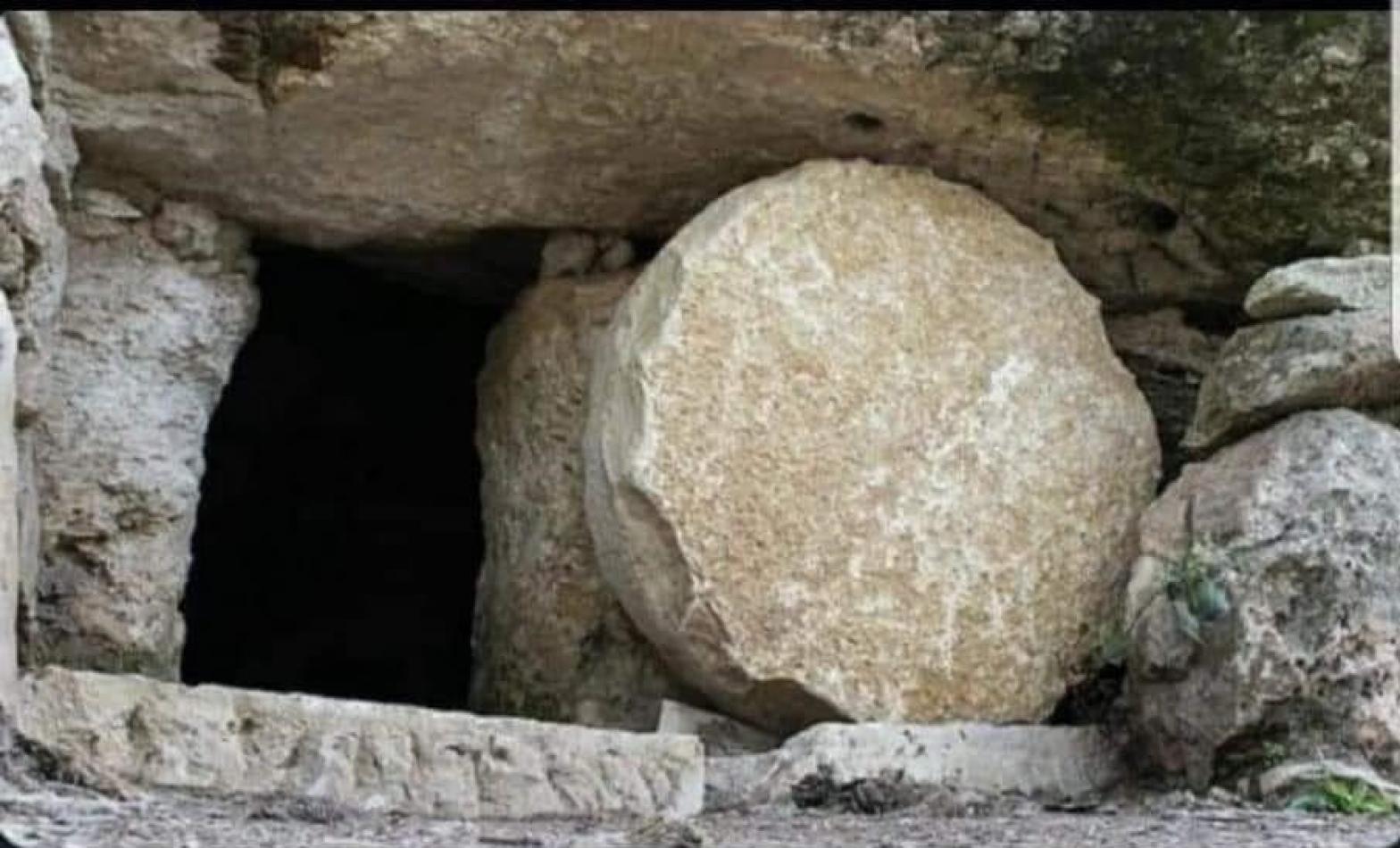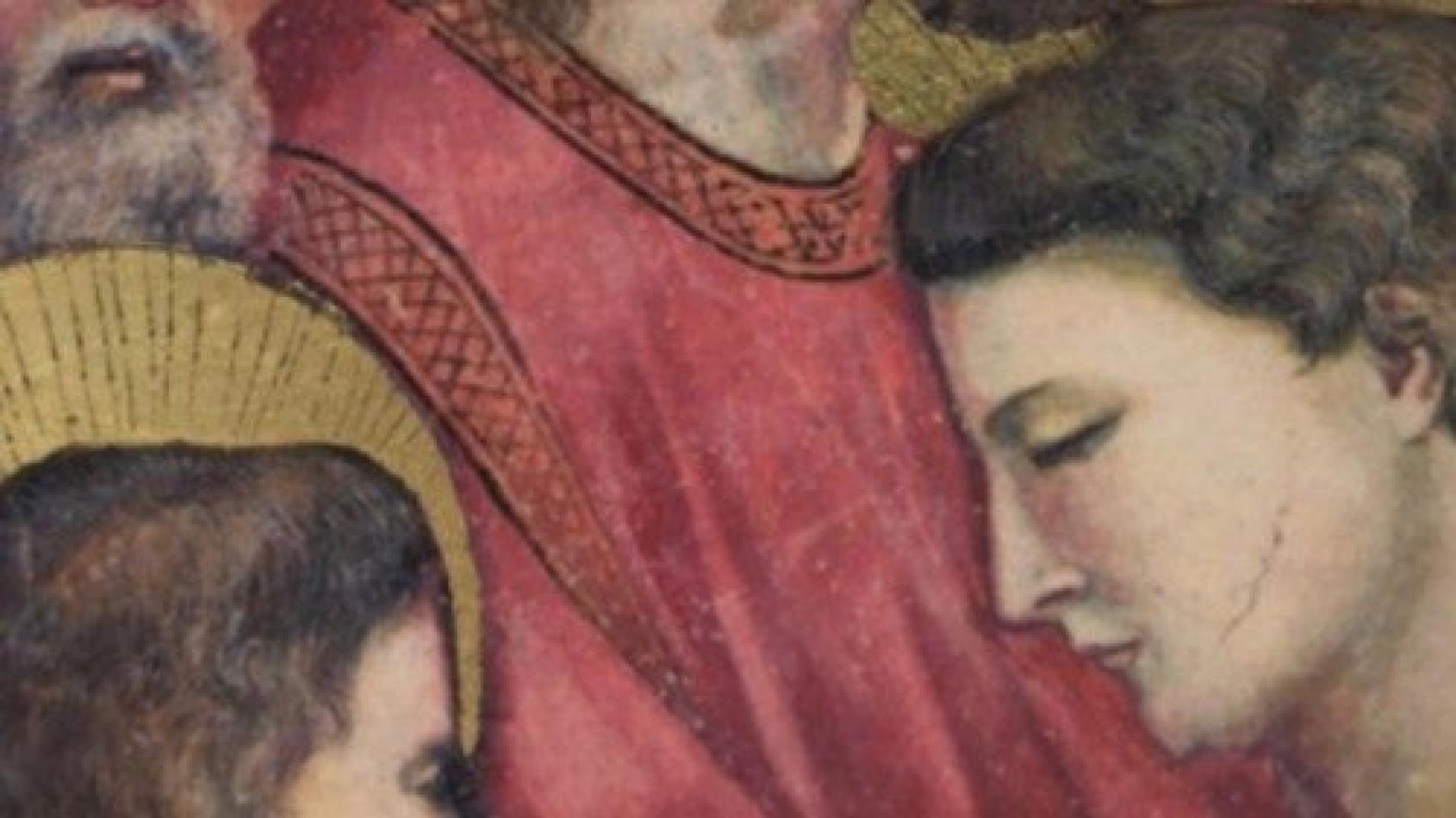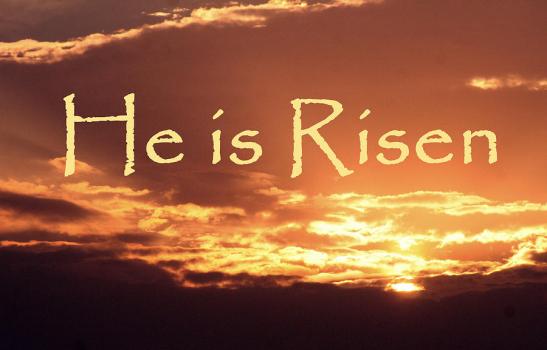Daniel Comboni
Comboni Missionaries
Institutional area
Other links
Newsletter
“Now, on the first day after the Sabbath, Mary of Magdala came to the tomb early in the morning while it was still dark …” (v. 1). In these first words of the Gospel of Easter day, we can sense, almost breathe the signs of death’s victory. On earth, it’s all silence, immobility and quiet. A woman, alone and frightened, moves in the darkness of the night. Death seems to dominate unchallenged while silence and darkness celebrate the triumph. Power, the principle of force, discrimination, injustice and the yeast of cunning seem to have decisively bettered the forces of life. (...)
Easter, the Day without sunset
Easter Vigil – Mark 16:1-7: “He is risen, he is not here.”
Easter Sunday – John 20:1-9: “The other disciple… saw and believed.”
Easter Evening – Luke 24:13-35: “Stay with us, for it is nearly evening and the day is almost over.”
“This is the day that the Lord has made: let us rejoice and be glad,” says the Easter Day psalm (Psalm 117). We have longed for this day, hoped for it, prepared for it, but we have not done it! The Lord has done it! There are some things, the things that really matter, that our hand cannot do. This day is God’s work, his masterpiece. In the first “holy week”, the week of creation, God had put order into chaos, creating time and space, “and behold, it was a very good thing” (Genesis 1:31). In this new week, Holy Week, God has freed his creation from the corruption of death, bringing eternity into time. “This has been done by the Lord: a marvel in our eyes,” the psalmist continues. Yes, a marvel we never dreamed of. Christ, “the Door”, has put earth in communication with heaven. Death is no longer the “door of no return”, but the gateway to the Day without setting.
At last a new thing under heaven!
“What has been will be
and what has been done will be done again;
there is nothing new under the sun.
There is perhaps something to be said of:
‘Behold, this is new’?
This very thing has already happened
in the centuries that have gone before us.”
(Qohelet 1:9-10)
Behold, Qoèlet, this is a true NEW thing! A man, Jesus of Nazareth, whom death had swallowed up and the tomb had locked up, came forth alive, victorious over death. It was on 9 April in the year 30. Question the times past. Nothing like this had ever happened! The unbelievable has happened. And we are witnesses of it! Let us run, then, with hearts bursting in our chests, with tears of joy, after tears of despair, eager to tell everyone: Christ is risen!
And from now on everything changes. Nothing will be as before! Qoèlet, no longer hate life (2:17)! Proclaim no more”happy the dead, now departed, than the living who are still alive” (4:2)! Because…
“Death with life contended:
combat strangely ended!
Life’s own Champion, slain,
yet lives to reign…
Christ is truly risen
from the dead we know.”
(Easter Sequence)
From that 9 April, the missionary race began: “Go, tell his disciples and Peter, He is going before you into Galilee. There you will see him, as he has told you” (Mark 16:1-7, gospel of the vigil). And the followers of the ‘way’ (Acts of the Apostles 9:2 etc.), tireless – for one never tires when one’s heart is content! – have travelled all the streets and roads of all “Galilees”, the peripheries of the world, eager to communicate this Good News to all: Christ is risen!
The Risen One must be sought where there is life!
“You seek Jesus of Nazareth, the crucified. He is risen, he is not here”. If “he is not here”, where is he to be sought? Where life teems! Where one breathes new air! Not where life rots!…
One would have to wonder whether the new, spring-like air of the Risen One is breathed in our churches and assemblies. Unfortunately, it must be acknowledged that sometimes we breathe badly, there is a stale air in our ecclesial environments. We have become allergic to novelty, we do not want to be challenged by the new, by what does not fit into our old patterns of life and thought. Sometimes one gets the impression that the doors and windows thrown open by the Second Vatican Council have closed again. No wonder, then, that restless people, dissatisfied with today’s society and looking for a different world, go elsewhere where life ferments.
We say we love novelty, but in our own way. In reality we fear novelty, because it unsettles us and upsets our habitual rhythms. We prefer verbs of repetition: making the old new. That is why the two disciples of Emmaus were disappointed (Luke 24:13-35, the Easter evening gospel): “We were hoping that he was the one who would deliver Israel!” The apostles hoped the same before the ascension: “Lord, is this the time when you will restore the kingdom for Israel?” (Acts of the Apostles 1:6). The Lord, however, is not a “restorer” but an innovator: “Remember no more the past times, think no more of the former things! Behold, I am doing a new thing: right now it is sprouting, do you not see it?” (Isaiah 43:18-19).
Look at life from the right side: the third day!
“May Easter overcome our sin, shatter our fears and make us see sadness, sickness, abuse and even death, from the right side: that of the “third day”. From that side, the place of the Calvary will appear to us as Tabor. The crosses will look like antennas, placed there for us to hear the music of Heaven. The sufferings of the world will not be for us the gasps of agony, but the travails of childbirth.
And the stigmata left by the nails in our crucified hands, will be the loopholes through which we will already glimpse the lights of a new world!” (Don Tonino Bello).
Best wishes for a Happy Easter to all!
Fr. Manuel João Pereira Correia mccj
Verona, March 2024
WITNESS
IS ONE WHO “SAW” THE LORD
“Now, on the first day after the Sabbath, Mary of Magdala came to the tomb early in the morning while it was still dark …” (v. 1). In these first words of the Gospel of Easter day, we can sense, almost breathe the signs of death’s victory. On earth, it’s all silence, immobility and quiet. A woman, alone and frightened, moves in the darkness of the night. Death seems to dominate unchallenged while silence and darkness celebrate the triumph. Power, the principle of force, discrimination, injustice and the yeast of cunning seem to have decisively bettered the forces of life.
Let’s see what happens when Mary sees the empty tomb: the scene changes as it by magic. Caught in a sudden thrill, all the characters are shaken from their slumber and move quickly. “Mary of Magdala runs to Simon Peter … who rushes out with the other disciple … They run together, but the other disciple, outrun him …” (vv. 2-4). Taking everyone by surprise, the day after the Sabbath, life explodes in all its force. God intervened and opened the tomb, but Mary of Magdala does not know that. She thinks that the corpse was stolen. It’s a natural and spontaneous reaction. It is the first thought that would cross the mind of anyone running into an empty tomb.
We can stop at this first finding or continue searching for the meaning of what we observe. In the face of death, we can be resigned, cry, or open our hearts to the light from above.
Magdalene exits the scene momentarily, as if passing the baton in the race toward the faith to two other disciples. One is well-known, Peter, the other has no name. It is generally believed to be the Evangelist, John. But this was identified much later, about a hundred years after the apostle had died. It may have been him, the disciple that Jesus loved. However, in the Gospel of John, this figure certainly has a symbolic character who should be dwelt upon.
This unnamed disciple is always connected in some way to Peter:
– He enters the scene next to Andrew. One day the two see Jesus passing by. They ask him where he lives. They follow and stay with him all night. What about Peter? He enters because the nameless disciple reaches Jesus before him (Jn 1:35-40).
– This disciple is not spoken about again until the last supper when Jesus declares that among the twelve there is also a traitor. Who finds him out? Those who can recognize who is on the side of Jesus and who instead is against him? It’s not Peter, but the unnamed disciple who reclines his head on the breast of the Lord (Jn 13:23-26).
– During the passion, Peter stalls and denies the Master. The unnamed disciple has the courage to follow him into the house of the high priest and is close to Jesus during the process (Jn 18:15-27).
– Peter is not on Calvary. He escaped. The disciple whom Jesus loves is instead with the Master. He is at the foot of the cross with His mother (Jn 19:25-27).
– Then comes the passage in which Peter is again beaten both in the physical race and in the spiritual one—as we shall see shortly (Jn 20:3-10).
– On the sea of Tiberias, it is still this disciple who recognizes the risen Christ in the man on the shore. Peter recognizes him only later (Jn 21:7).
– Finally, when he is invited by Jesus to follow him, Peter does not have the courage to do it alone. He feels the need to have at his side “the disciple whom Jesus loved” (Jn 21:20-25).
Who is he then? Why has he no name?
He represents the authentic disciple, the one that just meets Jesus and does not hesitate. He immediately follows him and wants to know him. He even forgets to sleep just to be with him. Do you know him enough to immediately know who are his friends and enemies? He also follows him when it is necessary to offer his life. He has no name, because everyone is invited to name themselves.
We see this pair of disciples run to the tomb. The unnamed disciple arrives first, bends, sees the linen cloths lying there, but does not enter. Simon Peter also arrives, enters and sees the linen cloths lying flat, and the napkin that was placed on Jesus’ head, not lying with the linen cloths, but rolled up in a place by itself.
Nothing miraculous! There is no appearance of angels; everywhere one only the signs of death. Perhaps the two disciples have an intuition, the one formulated by John Chrysostom: “Whoever had taken the body, would not have stripped it before nor would have taken the trouble to remove and roll the napkin and leave it in a place by itself.” His body has therefore not been stolen.
Peter stops, astonished and amazed. He observes but cannot go further. His thoughts are frozen before the evidence of death. The unnamed disciple instead takes a step forward: he sees and begins to believe (v. 8). It is the climactic moment of his journey of faith in the risen Lord. In front of the signs of death (the grave, the bandages, the shroud…), he begins to sense the victory of life.
The following annotation unites the two disciples: “Scripture clearly said that Jesus must rise from the dead, but they had not yet understood that” (v. 9). It seems illogical, at least as regards the disciple without a name. But, at this point, the evangelist John is not compiling a cold chronicle of events, but is pointing the Christians of his community to the route through which to come to faith. It starts from the signs—those documented in the Gospels (Jn 20:30-31). However, they remain mysterious and incomprehensible unless guided by the Word of God contained in the holy Scriptures. These are words that open the mind and the heart and give the interior light that reveals the Risen One. The true disciple does not need further testing; he does not need the verification that Thomas will require.
Jesus said to his disciples: “Unless a grain of wheat falls into the earth and dies, it remains alone, but if it dies, it produces much fruit.” Whoever does not believe considers even the free-gift of life an absurdity, a madness, because behind this gift they only see signs of death. But in the light of Easter, the authentic disciple “begins to understand” that the life given for the brothers and sisters introduces one to the bliss of God.
The concluding verse of the episode: The two disciples “went back home again” (v. 10). It almost gives the impression that everything returns as before. But it is not so. The two have known Jesus; they have witnessed the same events and seen the same signs. By simply resuming their daily lives, they would continue to be discouraged and disappointed, but their new lives are guided by a new light and supported by a new hope
Fernando Armellini
Italian missionary and biblical scholar
https://sundaycommentaries.wordpress.com
CHRIST IS RISEN
Today the Church repeats, sings, shouts: “Jesus is Risen!”. But why is this? Peter, John, the women went to the Sepulchre and it was empty. He was not there. They went away with their hearts closed in sadness, the sadness of defeat: the Teacher, their Teacher, the One whom they loved so much had been put to death; He is dead. And there is no return from death. This is the defeat. This is the path of defeat, the path towards the sepulchre. But the Angel says to them, “He is not here, He is Risen”.
It is the first announcement: “He is Risen”. And then the confusion, the closed hearts, the apparitions. But the disciples stayed locked in the Upper Room the entire day because they were afraid that what happened to Jesus would happen to them. The Church does not cease to say before our losses, our closed and fearful hearts: “Stop, the Lord is Risen”. But if the Lord is Risen, why is it that these things happen? Why is it that there is so much adversity: illness, human trafficking, human slavery, war, destruction, mutilation, vengeance, hatred? Where is the Lord then?
Yesterday I phoned a young man with a grave illness, an educated young man, an engineer, and while talking to him, to give him a sign of faith, I said: “There are no explanations for what is happening to you. Look at Jesus on the Cross. God did this to his Son, and there is no other explanation”. And he answered: “Yes, but He asked His Son and the Son said ‘yes’. I was not asked if I wanted this”. This moves us. None of us is asked: “Are you happy with what is happening in the world? Are you willing to carry this cross further?”. And the Cross goes forth and faith in Jesus comes down from it. Today, the Church continues to say: “Stop. Jesus is Risen”. And this is not a fantasy. The Resurrection of Christ is not a celebration with many flowers. This is beautiful, but this is not it. It is something more. It is the mystery of the discarded stone which becomes the foundation of our existence. Christ is Risen. This is what it means.
In this throwaway culture where what is not needed is just used and disposed of, where what is not needed is thrown away, that stone — Jesus — the source of life, is discarded. And with faith in the Risen Christ, we too, pebbles on this earth of pain, tragedy, acquire meaning amid so many calamities. The sense to look beyond, the sense to say: “Look, there is no wall; there is a horizon, there is life, there is joy, there is the cross with this ambivalence. Look ahead, do not close within yourself. You pebble, acquire meaning in life because you are a pebble near that rock, that stone which the evil of sin discarded”. What does the Church tell us today before so many tragedies? Simply this: the discarded stone is not really discarded. The pebbles which believe and stick to that stone are not discarded. They have meaning and it is with this sentiment that the Church repeats from the bottom of Her heart: “Christ is Risen”.
Let us think for a while, each of us, think about the daily problems, the illnesses we have been through or of one that a relative has; let us think about wars, human tragedies and with simplicity, with a humble voice, without flowers, alone, before God, before us, let us say, “I do not know how this is, but I am certain that Christ is Risen and I have put a wager on it”. Brothers and sisters, this is what I wanted to say to you. Go home today repeating in your hearts: “Christ is Risen”.
Pope Francis
Easter 2017





